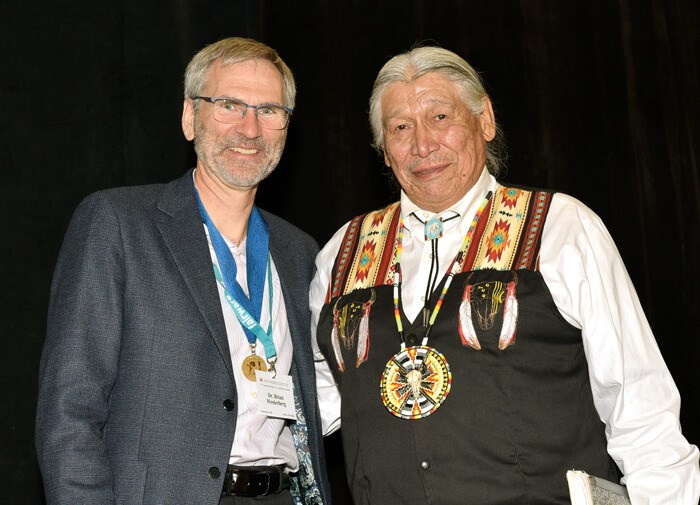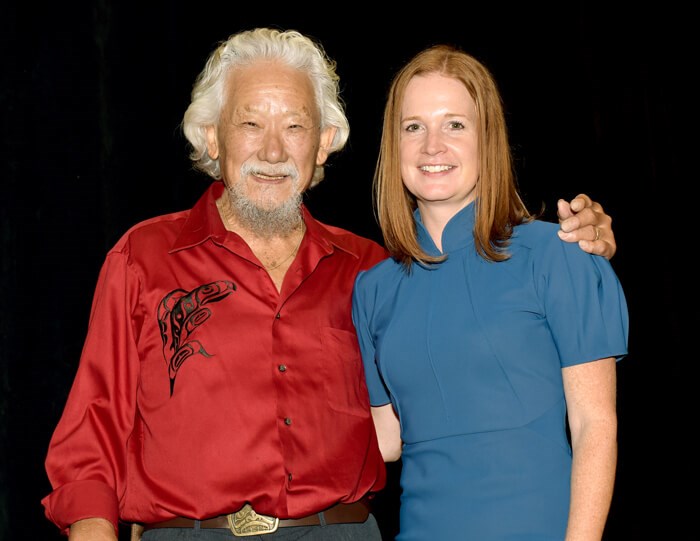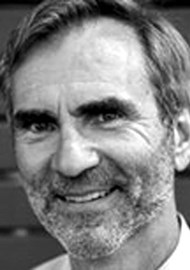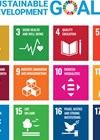Who knew our healthcare conference industry contributed so much to global carbon emissions? This article summarises means to reduce the impact such that we can continue to meet with our peers for educational meetings and networking, but in a sustainable manner.
Climate change is impacting our economy, science, politics and, most importantly, our health. As we are experiencing more heatwaves, wildfires, droughts, and floods around the world, climate change is creating eco-anxiety and putting one’s physical wellbeing and safety at risk. Planetary health is not an isolated issue that people in any field can disregard.
The healthcare profession cannot be excused from blame. We are producing unaccountable wastes and carbon emissions in healthcare facilities, the supply of health services, the healthcare supply chain, as well as in the healthcare conference industry across the world. Each large healthcare conference produces as much greenhouse gas emissions (GHGs) as is produced in a metropolitan city in a week [1].
Otolaryngologists should be front runners in reducing carbon emissions [2]. In particular, we need to examine how much waste and carbon emissions are being produced from each healthcare conference we attend: hours of flights, accommodations, and single-use merchandise are the norm of these conferences.
"Each large healthcare conference produces as much greenhouse gas emissions (GHGs) as is produced in a metropolitan city in a week"
As part of the planning process for our Canadian Society of Otolaryngology-Head and Neck Surgery Annual Meeting in Vancouver in October 2022, we examined the impact of the conference on GHGs and sought ways to minimise the impact [3]. We challenged industry and conference participants to be part of the solution. To provide an opportunity for members to attend an educational meeting with the view of providing sustainable and low-carbon care to our population, the following ideas were discussed in the context of medical conferences: transportation; virtual or hybrid options; accommodation; awareness and advocacy; and waste reduction.

Brian Westerberg (left) and keynote speaker, Elder Francois Paulette, who spoke of the impact climate change has had on his First Nations Community in Northern Canada and with passion about why we need to change our approach to planetary health at the Canadian Society of Otolaryngology Head and Neck Surgery Annual Meeting in October 2022.
Transportation
The transportation sector is one of the largest sources of carbon dioxide (CO2) emissions, with the aviation industry being the largest contributor; fossil fuel use is the primary source of increased atmospheric concentration of CO2. Aviation produces approximately 0.2kg of CO2 per km travelled, which is the highest amount of CO2 produced when compared to other modes of transportation. The total carbon emission from a large conference can reach as high as three tonnes of CO2 per attendee, most coming from transportation [1]. Google flights have started reporting CO2 emissions per flight, which allows consumers to make environmentally informed decisions surrounding their air travel. An alternative for conference organisers to consider is holding multiple small conferences at different locations, perhaps linked virtually with each other for important presentations, thereby reducing travel distances for attendees and allowing land transportation.
Although less than airplane travel, transportation by car is also a significant contributor to CO2 emissions, particularly given the number of cars on the roads of major cities. Attendees participating in person should avoid driving by themselves to the conference site; carpooling or public transit should be encouraged. Sending a public transit card to attendees before the conference and having the conference where major public transportations lines are easily accessible would further encourage attendees to take public transportations.
Another consideration is the ancillary and social events associated with healthcare conferences. Planning all such events in close proximity to the conference location negates the need for further transportation once attendees arrive at the conference.
Virtual or hybrid options
The COVID-19 pandemic has taught us that online meetings and conferences are possible and, with proper planning, they can be as successful as in-person meetings. Whenever possible, we should promote online or hybrid formats of otolaryngology conferences and encourage otolaryngologists and healthcare workers to participate from their own countries/cities. Virtual conferences still contribute to the carbon footprint, given the emissions associated with running virtual platforms, however this is significantly less than the emissions associated with in-person meetings. At the least, guest speakers that solely contribute an hour-long presentation and then leave the meeting should whenever possible present virtually. We opted for this for several of our guest speakers, who also were quite happy sleeping in their own bed and not having to travel.
Accommodation
Hotels themselves are an energy and water intensive sector in tourism. Reasons for this are multitude: air conditioner/heater use; use of single-use products for purported sanitary reasons; linen tablecloths requiring frequent laundering as well as other excessive laundry. Hotels providing full service for meals and beverages can contribute to a higher carbon footprint. Selecting a venue that provides, or requesting them to provide, predominantly plant-based menu options, sourced locally, would ultimately produce less carbon as a non-plant-based diet produces 50% more kilograms of CO2 equivalent per unit mass than a vegan diet [4]. When choosing an eco-friendly accommodation, one should consider energy efficiency, use of renewable energy, and electrification of equipment. For example, choosing a hotel from Green Key Global, which is a green hotel certification programme for reducing carbon footprint, is encouraged. Introducing a green image to the participants, providing satisfaction in a greener approach in the hotel/accommodation industry and advertising through word of mouth are the foundation of driving the greener hotel industry to success.
Awareness and advocacy
Green marketing has been one of the most significant driving forces in directing consumers’ attention to sustainability and use of greener products. Repeated exposure and labelling have shown efficacy in consumers selecting carbon neutral products over non-eco friendly products [5]. As such, advertising the green initiatives that we are supporting and reasons for doing so, including their overall impact on reducing greenhouse gas emissions, will also facilitate change: informing the participants before they arrive of the availability of public transit can have a higher success in encouraging a greener approach; hiring waste education volunteers to help attendees with sorting waste; using electronic content whenever possible and, when printing, using recycled papers and vegetable inks for paper-copied contents; and making announcements of the environmental focus of the event and why these choices were made. All these would help set the appropriate mindset in attendees.
At the time of registration, offering an option to donate to offset carbon emissions for the meeting serves two supporting roles: encouraging participants to think of the environmental impact they are having by attending, and advertising means to minimise/offset that impact. Similarly, being open and transparent regarding the CO2 emissions produced, despite the above measures, would be expected to lead to further impact reduction initiatives.
Partners in the supply chain need to be part of the solutions as well: restricting booth space and discouraging flying-in heavy equipment will minimise transportation impacts, and supporting a ‘Corporate Social Responsibility Award’ for the company that presents the greenest approach to healthcare and healthcare conferences are examples. As we need active participation from all attendees to drive the conference to success, increasing corporate partner awareness and participation in green conferences initiatives is essential.

CSO Meeting 2022 keynote speaker Dr David Suzuki, a lifelong advocate for nature, and guest speaker Dr Andrea MacNeil, a Vancouver-based oncologic surgeon passionate about sustainable surgical care.
Waste reduction
Waste reduction behaviours are highly contextual. For instance, the general public shows preference for certain appearance for recycling bins to increase motivation and likelihood of using the bins. To reduce waste production, using electronic invitations and advertising through social media rather than paper advertisements should be preferred. Similarly, programmes, abstracts, and evaluation forms can be made electronic. Sourcing reusable lanyards for registrant name tags that are subsequently collected and reused will help to reduce waste. Sending an email to the participants to bring their own bottles/mugs before the conference would reduce single-use cup usage. Rather than printing out each poster, setting up e-posters via online poster sessions or having in-person poster presentations with rotating e-poster sessions would be another consideration to reduce single-use poster papers. Using reusable cutleries and plates (or at least biodegradable), serving finger foods and beverages in a pitcher and/or serving water from a dispenser, and placing recycling bins next to the garbage bin with a clear label for sorting are all small details to reduce the waste produced at a conference.
There are multiple components to consider when organising an eco-friendly conference: transportation, virtual or hybrid options, accommodation, awareness and advocacy, and waste reduction. Considering how much carbon is produced each year from conferences, healthcare workers should not nonchalantly attend yearly conferences. As healthcare professionals in otolaryngology, we should be mindful that the actions we take every day can and will have ramifications on the health of the general population, ourselves, and our planet.
References
1. Klöwer M, Hopkins D, Allen M, Higham J. An analysis of ways to decarbonize conference travel after COVID-19. Nature 2020;583(7816):356-9.
2. Kim J, Waugh DW, Zaitchiket BF, et al. Climate change, the environment, and rhinologic disease. Int Forum Allergy Rhinol 2023;13(5):865-76.
3. Canadian Society of Otolaryngology. 2022.
www.entcanada.org/news-events/
annual-meetings/vancouver-2022/
Last accessed October 2023.
4. Üçtuğ FG, Günaydin D, Hünkar B, Öngelen C. Carbon footprints of omnivorous, vegetarian, and vegan diets based on traditional Turkish cuisine. Sustainable Production and Consumption 2021;26:597-609.
5. Birkenberg A, Narjes ME, Weinmann B, Birner R. The potential of carbon neutral labeling to engage coffee consumers in climate change mitigation. Journal of Cleaner Production 2021;278:123621.












